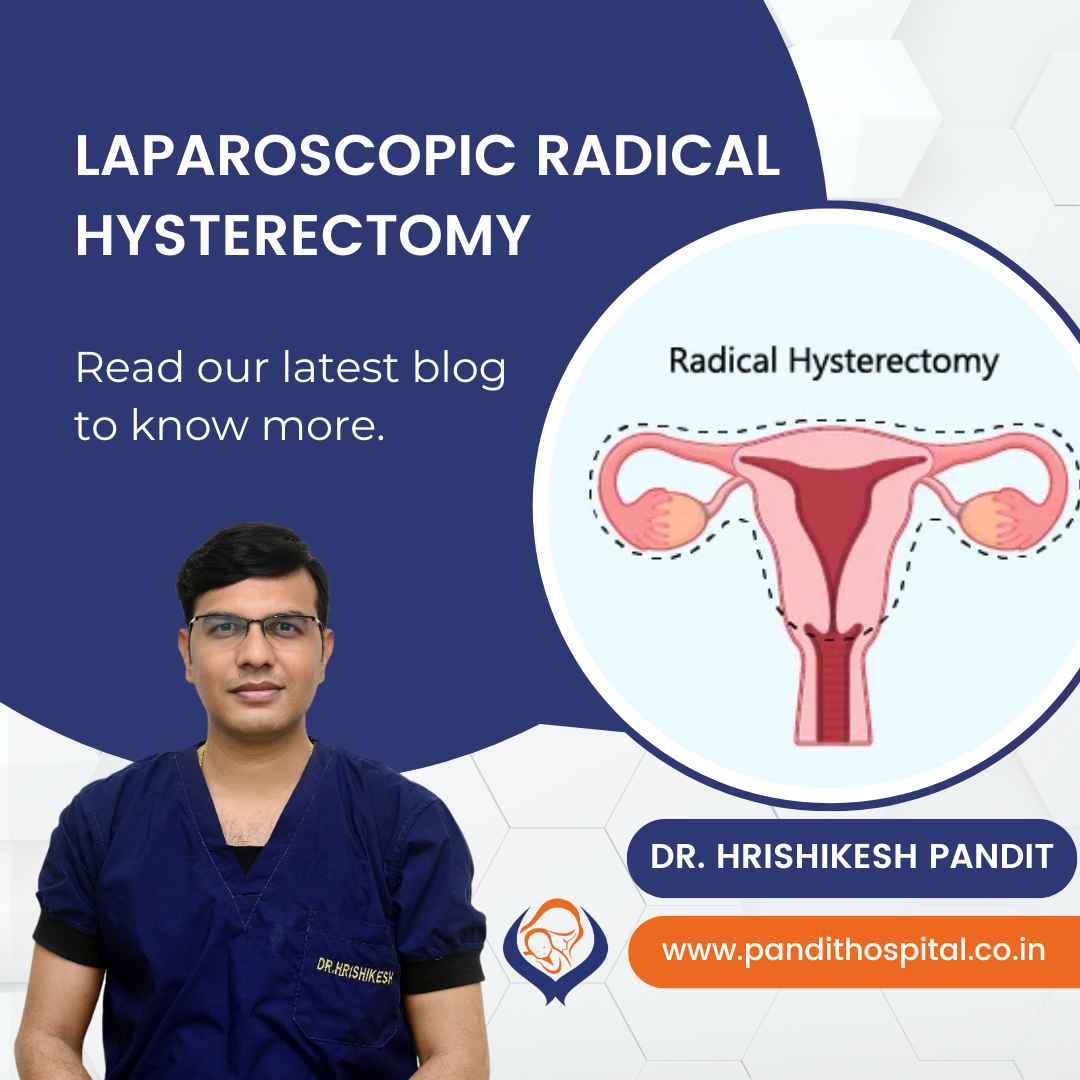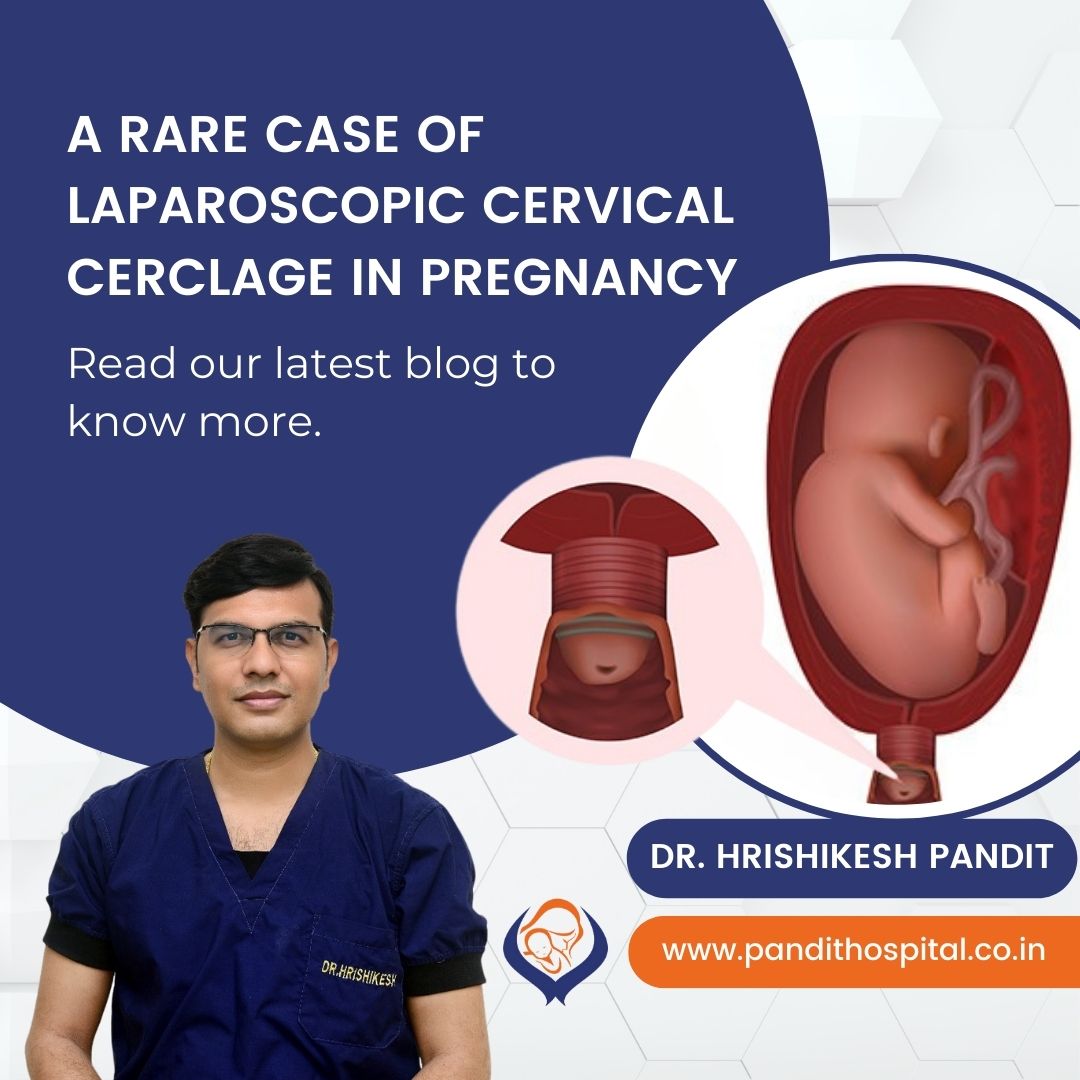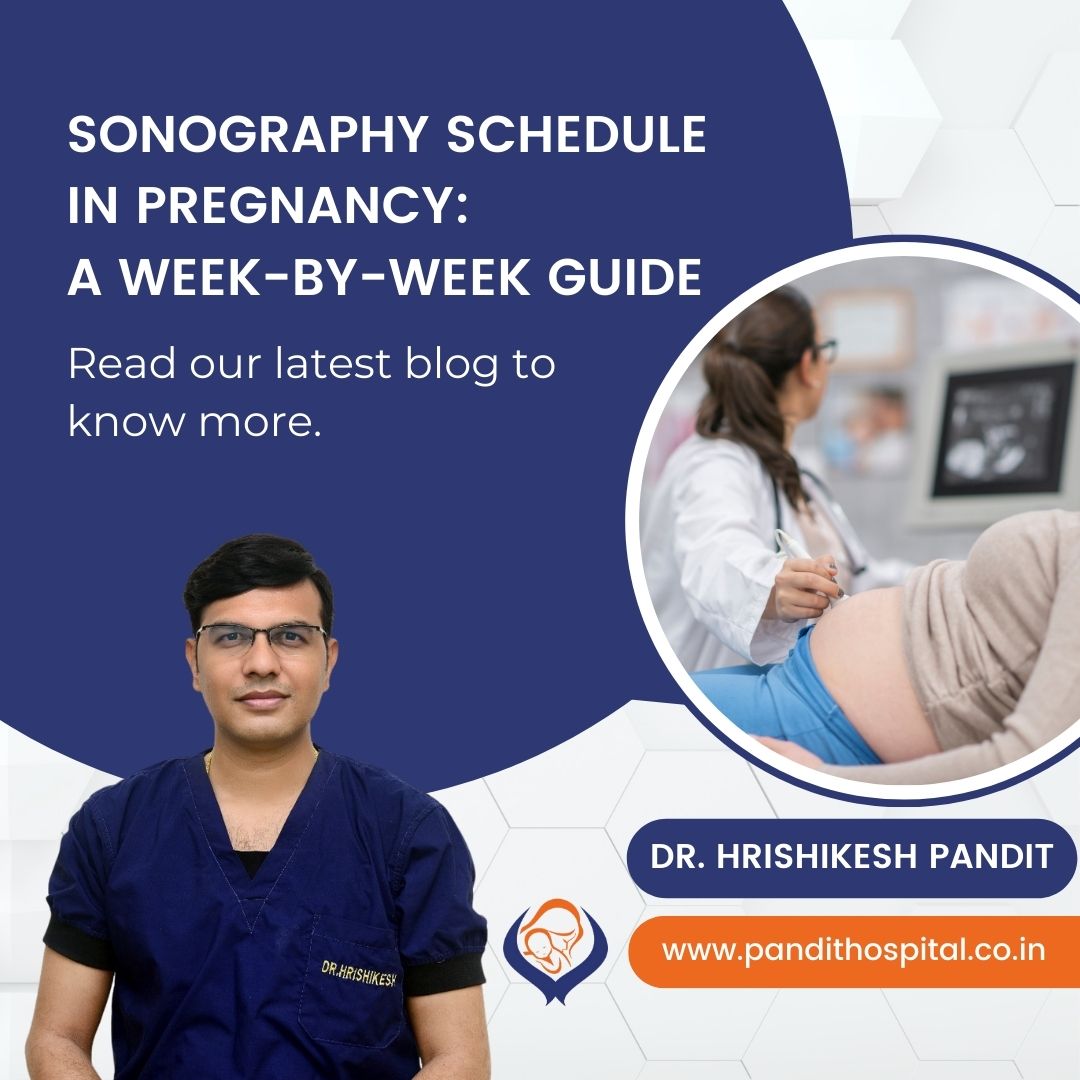Welcome to the Pandit Hospital 3D Laparoscopy Center blog! Today, Dr. Hrishikesh Pandit, a leading expert in minimally invasive gynecological surgery, answers your frequently asked questions about Laparoscopic Radical Hysterectomy.
Read this blog in Other Languages
A: Laparoscopic Radical Hysterectomy is a minimally invasive surgical procedure to remove the uterus, cervix, surrounding tissues (parametrium), and often the pelvic lymph nodes. It’s primarily performed to treat cervical cancer and, in some cases, other gynecological cancers.
A: This procedure is typically recommended for women diagnosed with early-stage cervical cancer. It may also be considered for certain cases of uterine or vaginal cancer. The specific stage and characteristics of the cancer determine the suitability of this approach.
A: I perform this procedure at Pandit Hospital, a leading 3D Laparoscopy Center in Ahilyanagar, Maharashtra. Our center is equipped with state-of-the-art technology, ensuring precision and optimal patient outcomes.
A: A total hysterectomy involves removing only the uterus and cervix. In contrast, a radical hysterectomy also includes the removal of surrounding tissues (parametrium) and potentially pelvic lymph nodes. This “radical” approach ensures a wider margin of removal, crucial for cancer treatment.
A: Radical Hysterectomy is a complex procedure that requires advanced surgical skills. The surgeon must meticulously dissect and remove tissues around the uterus and cervix while preserving vital structures like the bladder, ureters, and rectum. Laparoscopic Radical Hysterectomy adds another layer of complexity, demanding expertise in minimally invasive techniques and 3D visualization. At Pandit Hospital, we specialize in these advanced techniques, ensuring patient safety and effective treatment.
A: Yes! You can watch a video of a Laparoscopic Radical Hysterectomy performed by Dr. Hrishikesh Pandit on our YouTube channel: This video provides a detailed view of the procedure. https://youtu.be/4hC9k156Sgo
A: The laparoscopic approach offers several advantages over traditional open surgery, including:
- Smaller incisions, leading to less scarring.
- Reduced blood loss.
- Less post-operative pain.
- Shorter hospital stay.
- Faster recovery.
A: Recovery time varies, but most patients can return to their normal activities within a few weeks. We provide comprehensive post-operative care and guidance to ensure a smooth recovery.
A: As with any surgical procedure, there are potential risks, including bleeding, infection, and damage to surrounding organs. However, with experienced surgeons and advanced techniques, these risks are minimized. We thoroughly discuss potential risks and benefits with each patient before the surgery.
A: The long-term outcomes depend on the stage and type of cancer. However, this procedure offers excellent chances of cure for early-stage cervical cancer. Regular follow-up appointments are essential to monitor for any recurrence.
A: To schedule a consultation, please contact Pandit Hospital in Ahilyanagar, Maharashtra. Our team will be happy to assist you.
We hope this Q&A has provided valuable information about Laparoscopic Radical Hysterectomy. At Pandit Hospital, we are committed to providing advanced, compassionate care to our patients.
At Pandit Hospital, you are in safe hands!
To consult Dr. Hrishikesh Pandit, Click Below,
Pandit Hospital – Best Maternity care center in Ahmednagar
LET’S SEE OUR INTRO VIDEO
At Pandit Hospital, we provide all the maternity services from antenatal to postnatal period under one roof
Let's Connect!!
0241-2441717 / 0241-2442344
info.pandithospital@gmail.com
About author:
Dr. Hrishikesh Pandit:
Dr. Hrishikesh Pandit is one of the best obstetrician and gynecologist in India. He is also a well-renowned Laparoscopic surgeon. He obtained his MS (Ob Gyn) degree from the prestigious Pravara Institute of Medical Sciences. He has also done fellowship and diploma courses in laparoscopic surgeries and cancer treatment from Tata Hospital and Keil University, Germany. His surgical cases, papers and videos has been chosen in many international forums of gynecology.
At Pandit Hospital, we are always working hard to provide its patients with the highest level of medical innovation and patient care. With the aim of delivering complete maternity & gynecological care under one roof with the help of all contemporary amenities and cutting-edge medical equipment. Dr. Hrishikesh Pandit has a vision to bring the best of facilities regarding laparoscopy surgeries in the city of Ahmednagar. He is the pioneer of 3D Laparoscopy technology is Ahmednagar.
Latest Articles
Dr. Hrishikesh Pandit is one of the best laparoscopy surgeons in India. His determination to bring 3D Laparoscopy technology to Ahmednagar has eventually helped so many patients. Read the latest articles by Dr. Hrishikesh Pandit on Gynecology, gastric issues, and health tips for mothers during pregnancy.
Dr. Hrishikesh Pandit answers common questions about Laparoscopic Radical Hysterectomy at Pandit Hospital’s 3D Laparoscopy Center.
Laparoscopic Cerclage is done for cervical insufficiency or early abortion history. Consult Dr. Hrishikesh Pandit to know more about it. Excellent results in High Risk Pregnancies. Watch video on YouTube.
At Pandit Hospital, Ahilyanagar, we provide advanced maternity care with state-of-the-art 3D laparoscopy and sonography services to ensure the safety of both mother and baby.
FAQ
You should consult a doctor during the first 6 to 8 weeks of your pregnancy, or when your period is 2 to 4 weeks late.
If your contractions are 5 minutes apart, lasting for 1 minute, for 1 hour or longer, it’s time to head to the hospital.
Doctors recommend an infertility evaluation if you have not gotten pregnant after 1 year of having regular sexual intercourse without using birth control. If you are older than 35, an evaluation is recommended after 6 months of trying.
Yes, You can. But most babies need 39 weeks to develop fully. Induced or planned delivery before that time—without a valid medical reason—is not in the best interest of the baby or the mother. After 39 weeks you can plan delivery.
Women who are 21 to 29 should have a Pap test alone every 3 years. HPV testing alone can be considered for women who are 25 to 29, but Pap tests are preferred. Women who are 30 to 65 have three options for testing. They can have a Pap test and an HPV test (co-testing) every 5 years. They can have a Pap test alone every 3 years. Or they can have HPV testing alone every 5 years.
Laparoscopic hysterectomy is a safe and suitable procedure for chosen patients. It affords patients advantages like less peri-operative morbidity, better life quality, shorter hospitalization time, and faster return to activity.
Schedule a doctor’s visit if you have: Greenish, yellowish, thick or cheesy vaginal discharge; Strong vaginal odor; Redness, itching, burning or irritation of your vagina or the area of skin that surrounds the vagina and urethra (vulva); Bleeding or spotting unrelated to your period.
Painless delivery can be achieved using a form of regional anesthesia that provides pain relief during natural labor. Epidural anesthesia is administered through an injection on the lower back of the mother. The drug takes about 10-15 minutes to take effect.
Even in severe cases of endometriosis, most can be treated with laparoscopic surgery. In laparoscopic surgery, your surgeon inserts a slender viewing instrument (laparoscope) through a small incision near your navel and inserts instruments to remove endometrial tissue through another small incision.
The HPV vaccine is recommended for routine vaccination at the age of 11 or 12 years. (Vaccination can be started at age 9.) It is also recommended that vaccination for everyone through age 26 years if not adequately vaccinated when younger. HPV vaccination is given as a series of either two or three doses, depending on age at initial vaccination.




